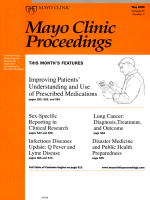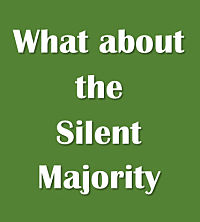 A new Family Practice study is showing only 25% prevalence of physician burnout. Does this much lower number create ...
A new Family Practice study is showing only 25% prevalence of physician burnout. Does this much lower number create ...
-
a controversy
-
a "winner" in the "we're less burned out than you" derby
-
or just another data point
==============
The Quadruple Aim Physician Leadership Retreat
Learn more and book your seat
==============
There is a new -- and uniquely structured -- study in the Family Practice literature out this month showing a physician burnout prevalence rate of only 25% that is shaking up the widely accepted notion that over half of US doctors are most likely suffering from burnout. (BTW, the background rate of burnout in the general population of non-physician professionals is widely quoted as being the same 25%)
Let me show you the three absolutely unique features of this research project which render it one-of-a-kind in the universe of physician burnout prevalence studies.
This new study may be the first step in solving a mystery that has existed since the very first prevalence study was handed out over forty years ago. I will show you this below as well.
One more thing: Before anyone makes either of these mistakes ...
- Use this lower 25% number to stifle your outrage at the state of doctor wellbeing in America
- Or start touting Family Physicians as less burned out than other specialties (neener, neener, neener) ...
Let me ask ...
if the true physician burnout prevalence rate is actually 25%
-- IS THAT NUMBER ACCEPTABLE? 
FIRST:
Where does the "half of US doctors are burned out" mantra come from in the first place?
To understand that I must tell you a little about physician burnout studies in general, because the devil is in the details here.
Please know that the majority of physician burnout studies -- are only prevalence studies
There is a cottage industry of burnout prevention researchers at several academic centers in America. A literature review of studies on physician burnout will quickly demonstrate that studies of prevalence outnumber studies of prevention and treatment at least four to one. Why is that?
The simplest explanation is prevalence studies are drop dead easy to do.
- Find a survey - the Maslach Burnout Inventory (MBI) will do nicely.
- Find a population to send it to - any specialty society or group of website subscribers is fine here.
- Send out the survey and watch about 20% of the recipients respond - this is the average response rate to anonymous surveys like this.
- Let your statistician do the heavy lifting.
- Publish.
- Repeat.
In the last twenty years, dozens of studies of US physicians just like this have shown burnout rates rising from the historical background rate of 33% to over 50% in recent articles.
The study that got the most press and established the burnout rate at 54% for a general population of US doctors -- was published by Mayo Clinic Proceedings in December of 2015:
 Changes in Burnout and Satisfaction With Work-Life Balance in Physicians and the General US Working Population Between 2011 and 2014.
Changes in Burnout and Satisfaction With Work-Life Balance in Physicians and the General US Working Population Between 2011 and 2014.
Tait D. Shanafelt, MD et al
You can download a .pdf of the full article here:
http://www.mayoclinicproceedings.org/article/S0025-6196(15)00716-8/pdf
35,922 physicians in the American Medical Association Physician Master File opened an email survey and 6880 or 19.2% filled out and returned it. Our full overview of this study is here.
This study showed the following prevalence rates:
- Burnout 54.4% (up from 45.5% in 2011)
- Depression 39.8%
- Suicidal Ideation 6.4%
Ever since that day, burnout prevention efforts have been driven by the acceptance of the statistic that "over half of all US doctors" are now burned out.
This New Study appears to be telling a different story.
 Journal of the American Board of Family Medicine, February 2017:
Journal of the American Board of Family Medicine, February 2017:
Prevalence of Burnout in Board Certified Family Physicians
James C. Puffer, MD et al
Here is the web page for the article at the JABFM
Here is a full .pdf of the article
This is a very different prevalence study than has ever been done before - which may explain its unique results.
Unique features of this research project:
- The people surveyed are Family Docs who are five years out of training, retaking their board exams. This is a distinct subset of Family physicians early in their practice who are reupping their boards after five years in practice.
- The return rate on this study was a never-before-seen 100% because the survey was part of the paperwork they completed during the Board Recertification. Remember that virtually every other survey is volunteer only -- with a response rate of around 20% on average.
- AND the results are based on a new single question survey (see below) as opposed to the MBI which is a 22 question survey. The new one-question technique has been validated against the MBI, but no single question survey has garnered this level of interest before now.
IMPLICATIONS:
- If this is a valid result, it gives us a glimpse into physician burnout among a subset of family doctors -- who are mostly physicians in their thirties and have survived 5 years in practice.
- They may indeed be healthier and happier than the general physician population.
-
If this survey was not mandatory, the subjects answered at a rate that implies they thought it was required. Which raises this question: If you were answering a burnout question as a "required" component of your first board recertification -- and YOU WERE BURNED OUT -- would you answer honestly ??
 What's the Mystery I spoke of above?
What's the Mystery I spoke of above?
Until now we have never had an answer to the question - what about the people who DO NOT RETURN THE SURVEY? Are they more or less burned out than the ones who respond?
Until now all we have known is that the responders are a "valid statistical sample" of the universe of doctors who received the survey. With a 100% response rate and a result showing burnout prevalence far below the usual averages ... we have a first indication that non-responders may indeed be less burned out.
That would be BIG NEWS -- as it challenges the assumption that half of all US physicians are burned out -- made by extrapolating from previous surveys.
Interesting stuff -- stay tuned.
============
BTW, here is the one burnout question they asked
It is a bit of a trick question because it has five answers to choose from:
“Overall, based on your definition of burnout, how would you rate your level of burnout?”
1 = “I enjoy my work. I have no symptoms of burnout”
2 = “Occasionally I am under stress, and I don’t always have as much energy as I once did, but I don’t feel burned out”
3 = “I am definitely burning out and have one or more symptoms of burnout, such as physical and emotional exhaustion”
4 = “The symptoms of burnout that I’m experiencing won’t go away. I think about frustration at work a lot”
5 = “I feel completely burned out and often wonder if I can go on. I am at the point where I may need some changes or may need to seek some sort of help”
These authors defined burnout as any of answers 3, 4 and 5.
============
Here's the Bottom Line from our perspective:
Setting these new results to the side -- the time for more prevalence surveys is long past. This is hair splitting at its finest.
With mergers and acquisitions across the country producing large employed physician groups for the first time in history -- now is the time to attack burnout head on and install the Quadruple Aim where ever possible.
I implore academics nationwide to join us in concentrating all their firepower on prevention and treatment research from now on.
Just let the prevalence studies go, no matter how easy it is to bang them out. Focus instead on researching the tools we can incorporate into prevention strategies for the individual physician and healthcare organizations going forward.
============
PLEASE LEAVE A COMMENT:
How does this study change your perception of distress in American physicians - or not?
============


 Changes in Burnout and Satisfaction With Work-Life Balance in Physicians and the General US Working Population Between 2011 and 2014.
Changes in Burnout and Satisfaction With Work-Life Balance in Physicians and the General US Working Population Between 2011 and 2014. What's the Mystery I spoke of above?
What's the Mystery I spoke of above?